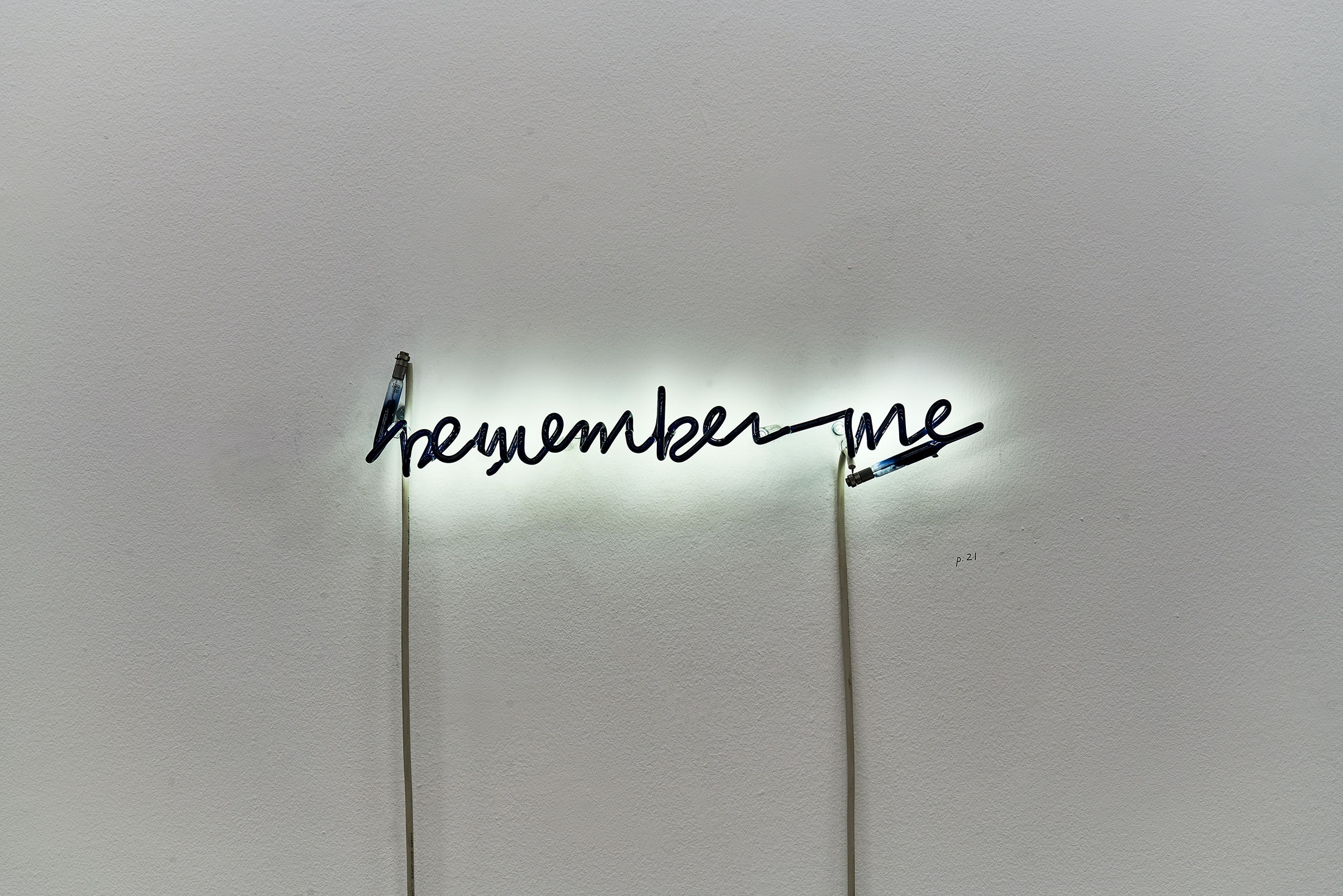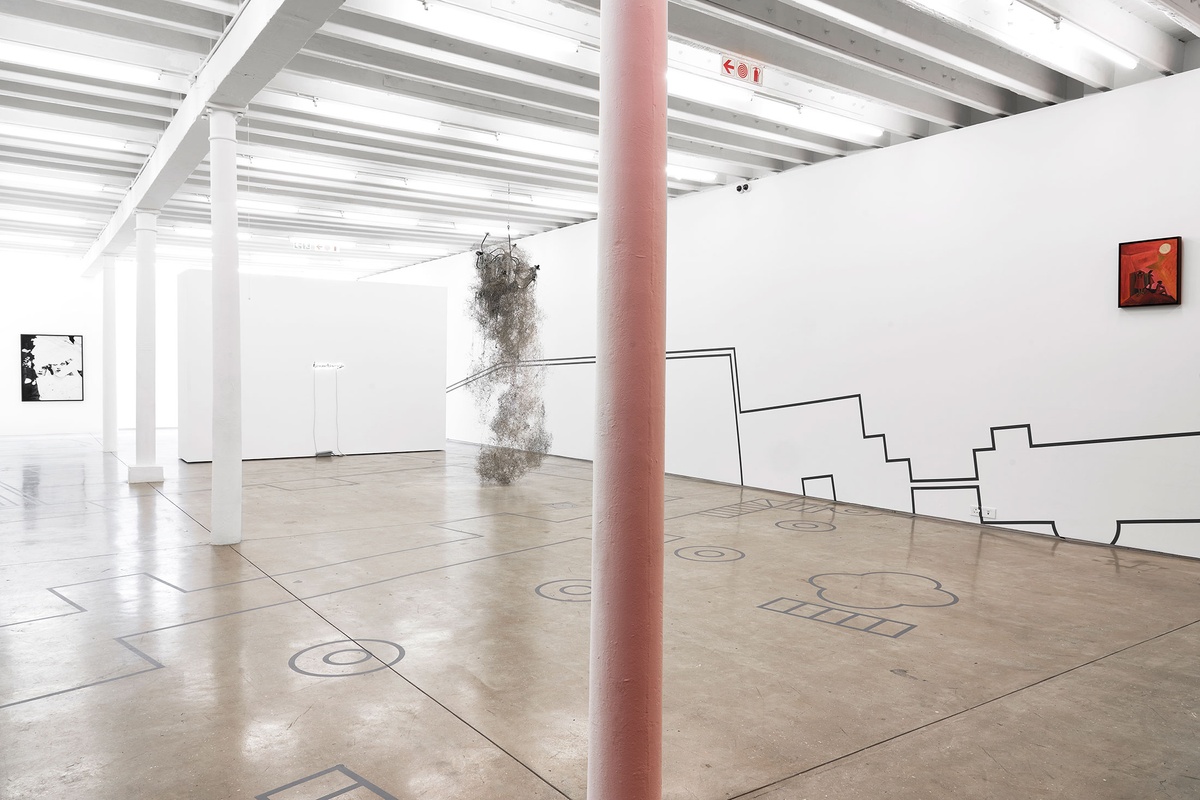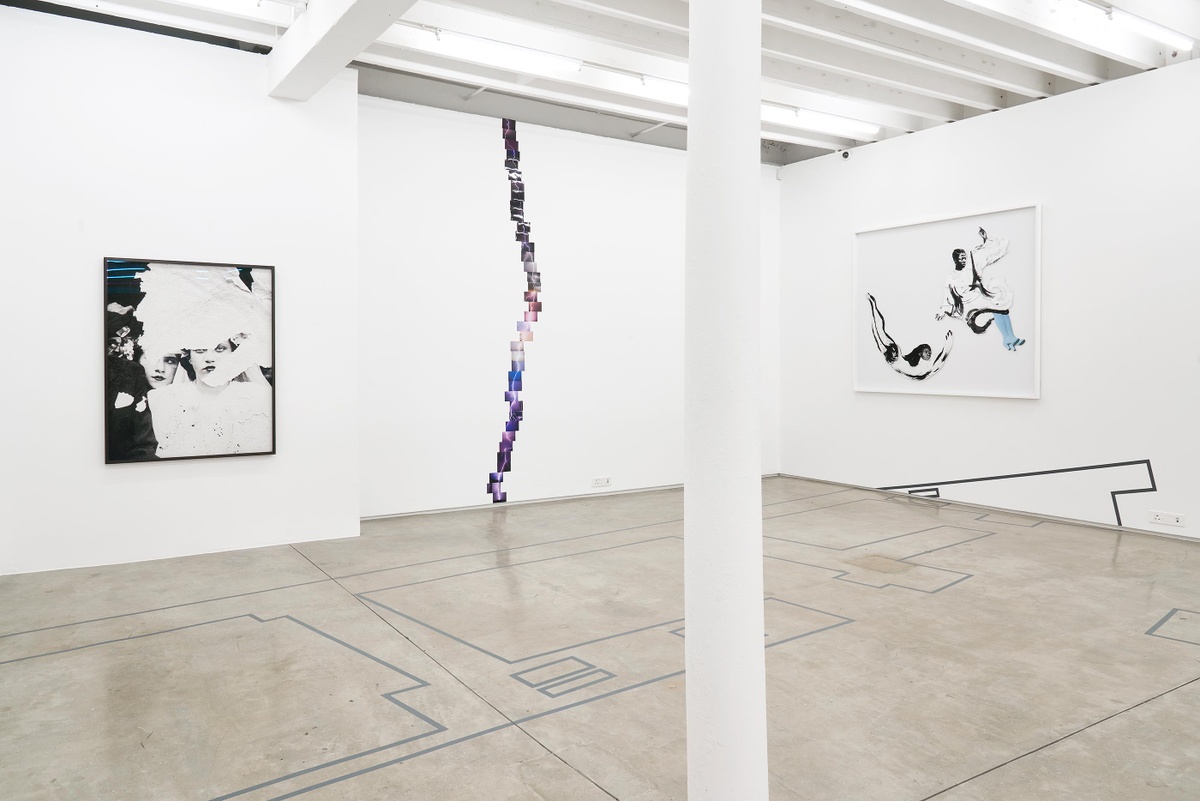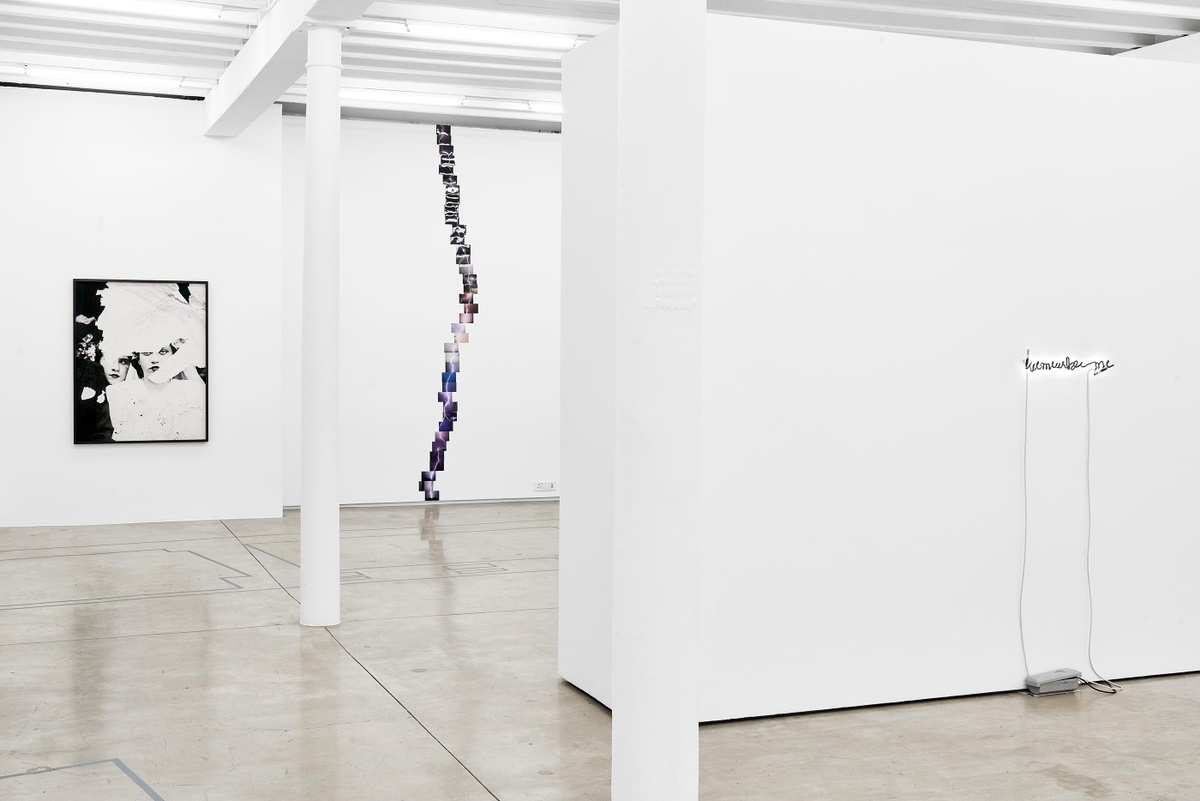Steve McQueen

Taken from a series of neon lights, each bearing the same inscription written in different hands, Remember Me is a monument without referent. Drafted by the artist, his friends and acquaintances, the phrase appears differently charged, changed by the inflexion the respective letterings lend it. Each writer is rendered anonymous, the ‘me’ that asks for remembrance indistinct from every other. In some instances, the request – the demand, the desire – appears near-illegible, scrawled with apparent hurry; in others, it is carefully transcribed, written with slow precision. The phrases, translated in neon, glow darkly – the exposed side of the tubing obscured by paint, that the words might appear at once shadowed and illuminated. Without certain provenance, the repeated refrain becomes both a memento mori and a luminescent reflection on the living’s duty to the dead.
“Life and death have always lived side by side... We live with ghosts in our everyday.” In attending to the tensions of collective memory and public forgetting, artist and filmmaker Steve McQueen recalls tragedies real and imagined, some imminent, others passed, and still more narrowly escaped. There is to his work a restless urgency, an insistence on remembrance as an act of political necessity. Where his feature films, such as 12 Years a Slave (2013), offer narrative engagements with such considerations, his nebulous and abstracted video works extend a more elliptical mode, affording oblique meditations on memory. Death offers the thematic undertow, his works more often touching on individual lives lost to violence, as in Ashes (2002–2015), an elegy to a young Grenadian local killed by drug dealers, 7th Nov (2001), in which a man recounts accidentally killing his brother, and his upcoming Grenfell project, a filmic memorial to the 2017 fire. As supplications against amnesia, the artist writes of these works, “I’m saying, no, no. Let’s not forget.”




